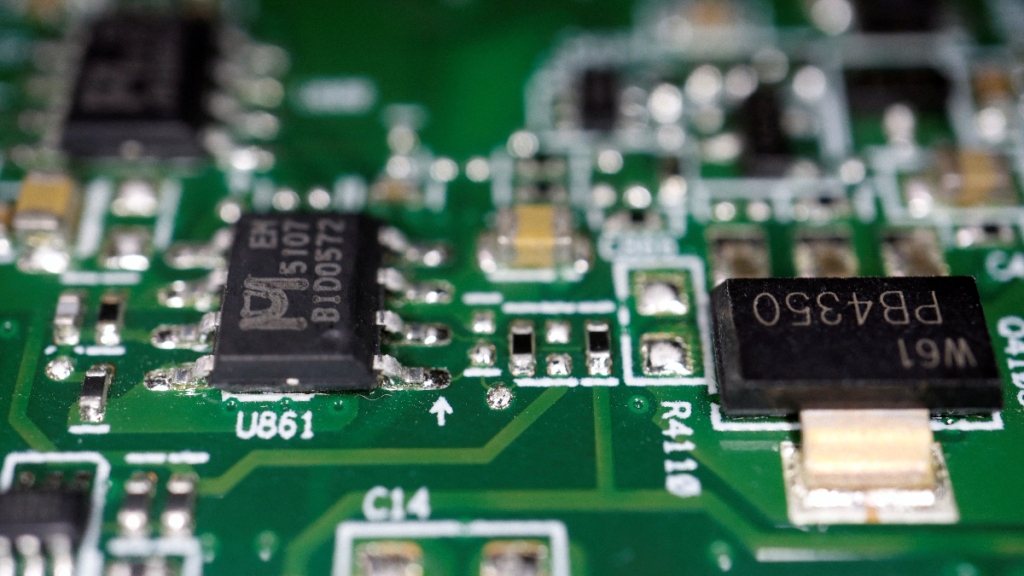
The Biden administration on Tuesday said it will require companies winning funds from its $52 billion U.S. semiconductor manufacturing and research program to share excess profits and explain how they plan to provide affordable childcare.
The Commerce Department on Tuesday is releasing its plans to begin accepting applications in late June for a $39 billion manufacturing subsidy program. The law also creates a 25% investment tax credit for building chip plants estimated to be worth $24 billion.
The CHIPS Act plays a central role in the Biden administration’s effort to bring semiconductor manufacturing back to the United States. Its success is vital to U.S. ambitions to keep ahead of China in global markets.
Recipients who receive more than $150 million in direct funding “will be required to share with the U.S. government a portion of any cash flows or returns that exceed the applicant’s projections by an agreed-upon threshold,” the department said.
Companies winning funding are also prohibited from using chips funds for dividends or stock buybacks, and must provide details of any plans to buy back their own shares over five years.
The department will consider an “applicant’s commitments to refrain from stock buybacks in the application review process” in a five-step application.
Democratic lawmakers have noted the largest U.S. semiconductor companies have poured hundreds of billions into stock buybacks in recent years, with Intel spending more than $100 billion on buybacks since 2005. Intel also pays a dividend.
Commerce Secretary Gina Raimondo said companies must submit a workforce plan that includes an outline of workforce needs. Applicants seeking more than $150 million in direct funding must submit “a plan for how they will provide affordable and accessible childcare for their workers.”
Applicants must address six program priority areas including plans “to commit to future investment in the U.S. semiconductor industry, including to build R&D facilities in the United States.”
Applicants should also “create opportunities for minority owned, veteran-owned, and women-owned businesses; demonstrate climate and environmental responsibility; invest in their communities by addressing barriers to economic inclusion; and commit to using iron, steel, and construction materials produced in the United States.”
Most direct funding awards are expected to range between 5% and 15% of project capital expenditures. Commerce said it generally expects the total amount of an award including loan or loan guarantee, will not exceed 35% of project capital expenditures.
“We’re going to be doing our own diligence. We’re not writing blank checks to any company that asks,” Raimondo said. “We’re making companies open their books.”
The initial funding opportunity seeks applications for projects involving leading-edge, current-generation, and mature-node semiconductors. It will release funding opportunities for semiconductor materials and manufacturing equipment facilities in late spring and one for R&D facilities in the fall.
Raimondo noted companies winning awards will be required to enter into agreements restricting their ability to expand semiconductor manufacturing capacity in foreign countries of concern like China for 10 years after winning funding. They cannot engage in any joint research or technology licensing efforts with a foreign entity of concern that involves sensitive technologies.
“We’re going to be releasing very detailed regulations in the next few weeks that give companies a clearer sense of what the red lines are,” Raimondo said on Monday ahead of the announcement.
WASHINGTON (Reuters)
Inside Telecom provides you with an extensive list of content covering all aspects of the Tech industry. Keep an eye on our News section to stay informed and updated with our daily articles.